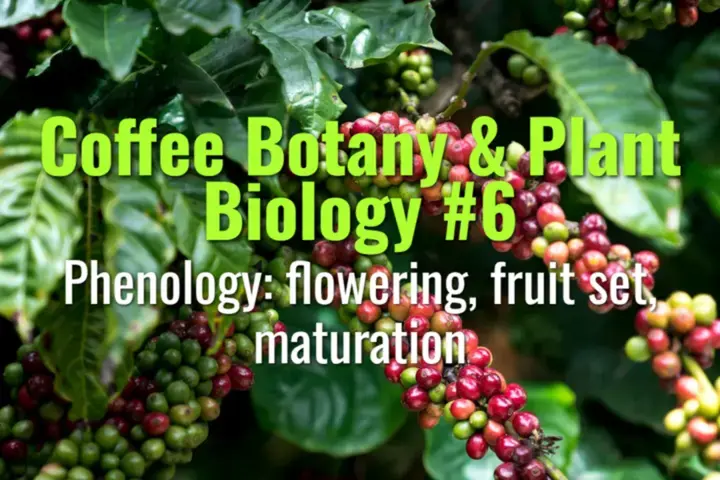Phenology: flowering, fruit set, maturation
This topic explains the phenological cycle of the coffee plant—how it flowers, sets fruit, and matures—and why these stages are critical for yield, quality, and farm management.
- Coffee Basics Nerds
- 2 min read
Article 6 of 12 in Coffee Botany & Plant Biology/

Flowering
- Trigger: Usually stimulated by rainfall after a dry period, combined with suitable temperature and day length.
- Appearance: Small, white, star-shaped, fragrant flowers (similar to jasmine) bloom in clusters at the leaf axils.
- Duration: Flowering lasts only a few days, though plants can bloom multiple times a year in regions with irregular rainfall.
- Importance: Synchronization of flowering impacts uniformity of fruit ripening and harvest planning.
Fruit Set
- Pollination:
- Arabica is mainly self-pollinating.
- Robusta and Liberica require cross-pollination by insects or wind.
- Fertilization: Successful pollination leads to fertilized ovaries developing into young cherries.
- Initial development: Tiny green fruit form shortly after flowering, resembling small berries.
- Fruit drop risk: Stress factors (drought, nutrient deficiency, pests) can cause premature drop, lowering yield.
Maturation
- Timeline:
- Arabica cherries take ~6–9 months to mature.
- Robusta cherries may take 9–11 months.
- Color change: Green → yellow/orange → red (or yellow in some varieties) as they ripen.
- Uniformity: Multiple flowerings in the same season often cause uneven ripening, complicating selective harvesting.
- Quality link: Fully ripe cherries yield the best cup quality; underripe or overripe ones cause defects.
Environmental Influences
- Rainfall & irrigation: Timing and consistency affect flowering and fruit development.
- Temperature: Cool nights and moderate days enhance Arabica quality; extremes may reduce yield.
- Altitude: Higher altitudes generally prolong maturation, allowing more complex flavor development.
Agricultural Management
- Monitoring phenology helps farmers:
- Plan fertilizer application around flowering.
- Time harvests for maximum ripeness.
- Schedule labor for peak picking seasons.
- Predict annual yields.
Lasting Importance
Understanding phenology allows farmers and researchers to link environmental conditions to yield and quality. Flowering, fruit set, and maturation form the biological rhythm that defines the agricultural and economic calendar of coffee production.